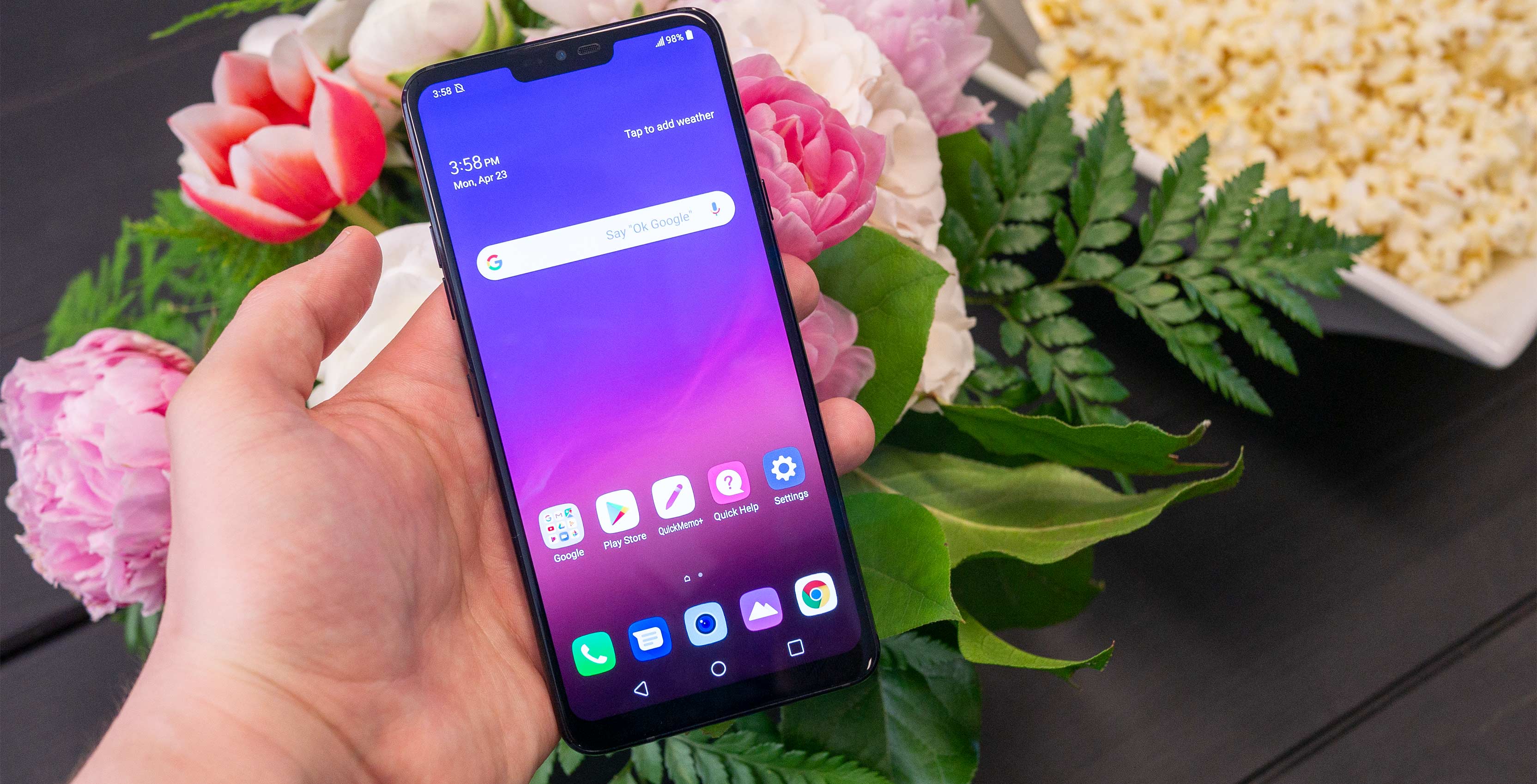
When news broke early this year that LG was rebranding the G series, the going theory was that it would be a major overhaul.
Instead, LG kept the ‘G’ title, but attached another of its brand names — ThinQ — a word that now appears across a range of LG products, from smart appliances to smart speakers.
Though the rebranding wasn’t quite as groundbreaking as many predicted, it’s nonetheless a strong declaration.
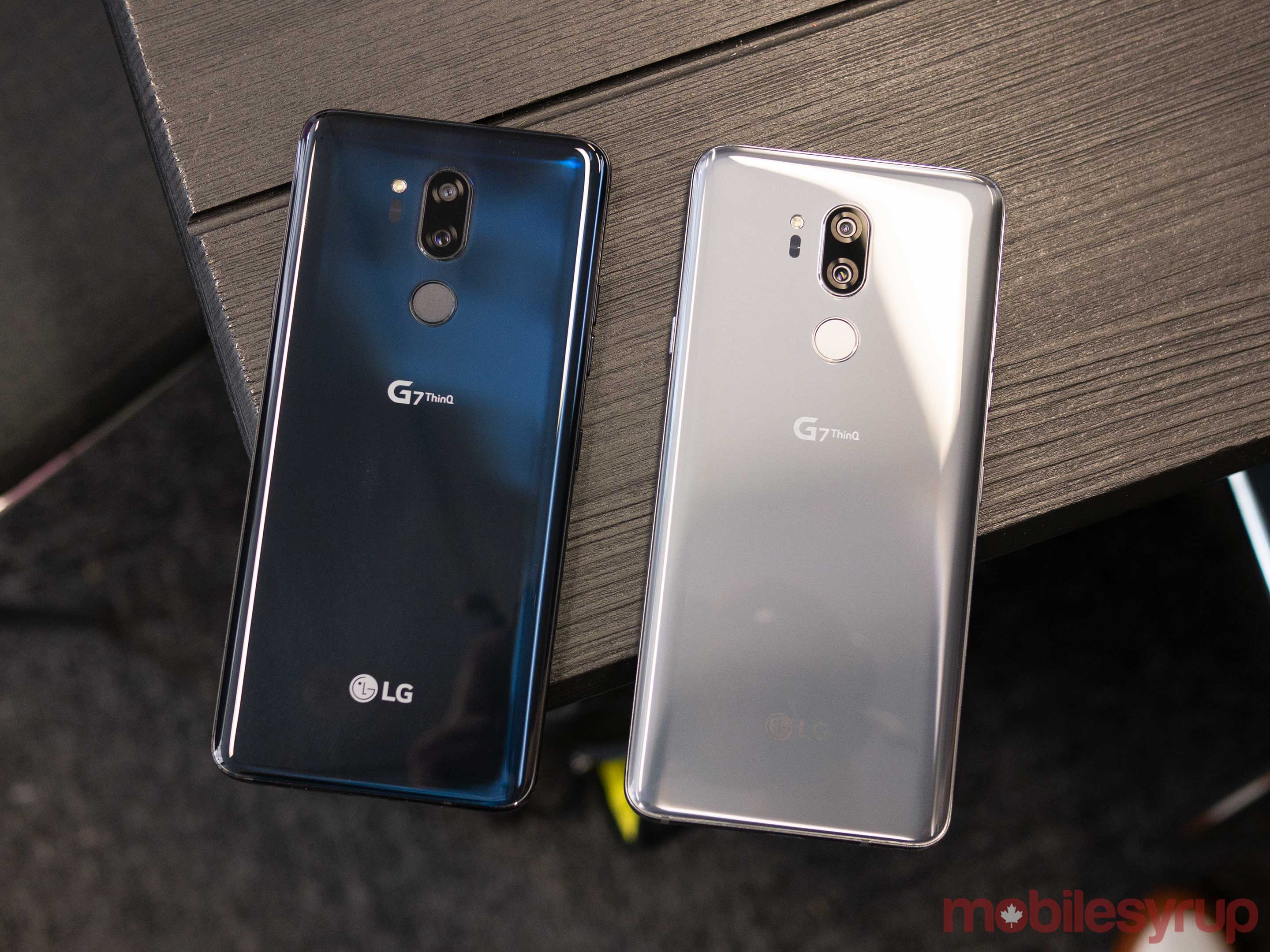
Adding ThinkQ to the G-series shows the company has an inkling that AI is majorly important to its future, a future in which producing hardware might end up being of secondary importance to the artificial intelligence it houses.
But while LG’s new AI-focused branding for the G7 ThinQ is bold, the South Korean company’s approach to the overall design of the flagship is arguably more cautious than in years past.
LG G7 ThinQ
LG G6
LG V30
Display
6.1-inch QHD+ display, 3120 x 1440 pixels, 19:5:9 aspect ratio
5.7-inch, QHD+ display, 2880×1440, 18:9 aspect ratio
6.0-inch, Quad HD+ display, 2880 x 1440 pixels, 18:9 aspect ratio
Processor
Snapdragon 845
Snapdragon 821
Snapdragon 835
RAM
4GB of RAM
4GB of RAM
4GB of RAM
Storage
64GB
32GB (expandable up to 2TB)
64GB (expandable up to 2TB)
Dimensions (in.)
153.2 x 71.9 x 7.9mm
148.9 x 71.9 x 7.9mm
151.7 x 75.4 x 7.3mm
Weight
162g
163g
158g
Rear Facing Camera
16-megapixel (f/1.6) + 16-megapixel (f/1.9)
13-megapixel (f/1.8) +13-megapixel (f/2.4)
16-megapixel (f/1.6, OIS) + 13-megapixel (f/1.9)
Front Facing Camera
8-megapixel (f/1.9)
5-megapixel (f/2.2)
5-megapixel (f/2.2)
OS
Android 8.0 Oreo
Android 7.0 Nougat
Android 7.1.2 Nougat
Battery
3,000mAh
3,300mAh
3,300mAh
Network Connectivity
GSM/HSPA/LTE
GSM/HSPA/LTE
GSM / HSPA / LTE
Sensors
Fingerprint (rear-mounted), accelerometer
Fingerprint (rear-mounted), accelerometer, gyro, proximity, compass, barometer, colour spectrum
Fingerprint sensor, Barometer, Three-axis gyro, Accelerometer, Proximity sensor
SIM Type
Nano SIM
Nano SIM
Nano SIM
Launch Date
May 3, 2018
April 7, 2017
September 21, 2017
Misc
Notched display, Colour: Platinum Gray, Aurora Black |
Colours: Ice Platinum |USB Type-C port, Headphone jack, IP68 certified water and dust resistant
Colour: Cloud Silver | Bluetooth 5.0 BLE, NFC , USB Type-C 2.0 (3.1 compatible), IP68 water/dust resistant, 32-bit Hi-Fi Quad DAC, Daydream Certified
Display
LG G7 ThinQ
6.1-inch QHD+ display, 3120 x 1440 pixels, 19:5:9 aspect ratio
LG G6
5.7-inch, QHD+ display, 2880×1440, 18:9 aspect ratio
LG V30
6.0-inch, Quad HD+ display, 2880 x 1440 pixels, 18:9 aspect ratio
Processor
LG G7 ThinQ
Snapdragon 845
LG G6
Snapdragon 821
LG V30
Snapdragon 835
RAM
LG G7 ThinQ
4GB of RAM
LG G6
4GB of RAM
LG V30
4GB of RAM
Storage
LG G7 ThinQ
64GB
LG G6
32GB (expandable up to 2TB)
LG V30
64GB (expandable up to 2TB)
Dimensions (in.)
LG G7 ThinQ
153.2 x 71.9 x 7.9mm
LG G6
148.9 x 71.9 x 7.9mm
LG V30
151.7 x 75.4 x 7.3mm
Weight
LG G7 ThinQ
162g
LG G6
163g
LG V30
158g
Rear Facing Camera
LG G7 ThinQ
16-megapixel (f/1.6) + 16-megapixel (f/1.9)
LG G6
13-megapixel (f/1.8) +13-megapixel (f/2.4)
LG V30
16-megapixel (f/1.6, OIS) + 13-megapixel (f/1.9)
Front Facing Camera
LG G7 ThinQ
8-megapixel (f/1.9)
LG G6
5-megapixel (f/2.2)
LG V30
5-megapixel (f/2.2)
OS
LG G7 ThinQ
Android 8.0 Oreo
LG G6
Android 7.0 Nougat
LG V30
Android 7.1.2 Nougat
Battery
LG G7 ThinQ
3,000mAh
LG G6
3,300mAh
LG V30
3,300mAh
Network Connectivity
LG G7 ThinQ
GSM/HSPA/LTE
LG G6
GSM/HSPA/LTE
LG V30
GSM / HSPA / LTE
Sensors
LG G7 ThinQ
Fingerprint (rear-mounted), accelerometer
LG G6
Fingerprint (rear-mounted), accelerometer, gyro, proximity, compass, barometer, colour spectrum
LG V30
Fingerprint sensor, Barometer, Three-axis gyro, Accelerometer, Proximity sensor
SIM Type
LG G7 ThinQ
Nano SIM
LG G6
Nano SIM
LG V30
Nano SIM
Launch Date
LG G7 ThinQ
May 3, 2018
LG G6
April 7, 2017
LG V30
September 21, 2017
Misc
LG G7 ThinQ
Notched display, Colour: Platinum Gray, Aurora Black |
LG G6
Colours: Ice Platinum |USB Type-C port, Headphone jack, IP68 certified water and dust resistant
LG V30
Colour: Cloud Silver | Bluetooth 5.0 BLE, NFC , USB Type-C 2.0 (3.1 compatible), IP68 water/dust resistant, 32-bit Hi-Fi Quad DAC, Daydream Certified
For one thing, just as many smartphone manufacturers are busy walling their gardens in the name of innovation, LG has made some notably pro-consumer choices with the G7, including keeping the headphone jack and launching Google Assistant through its new dedicated AI button, rather than a Bixby-style in-house AI.
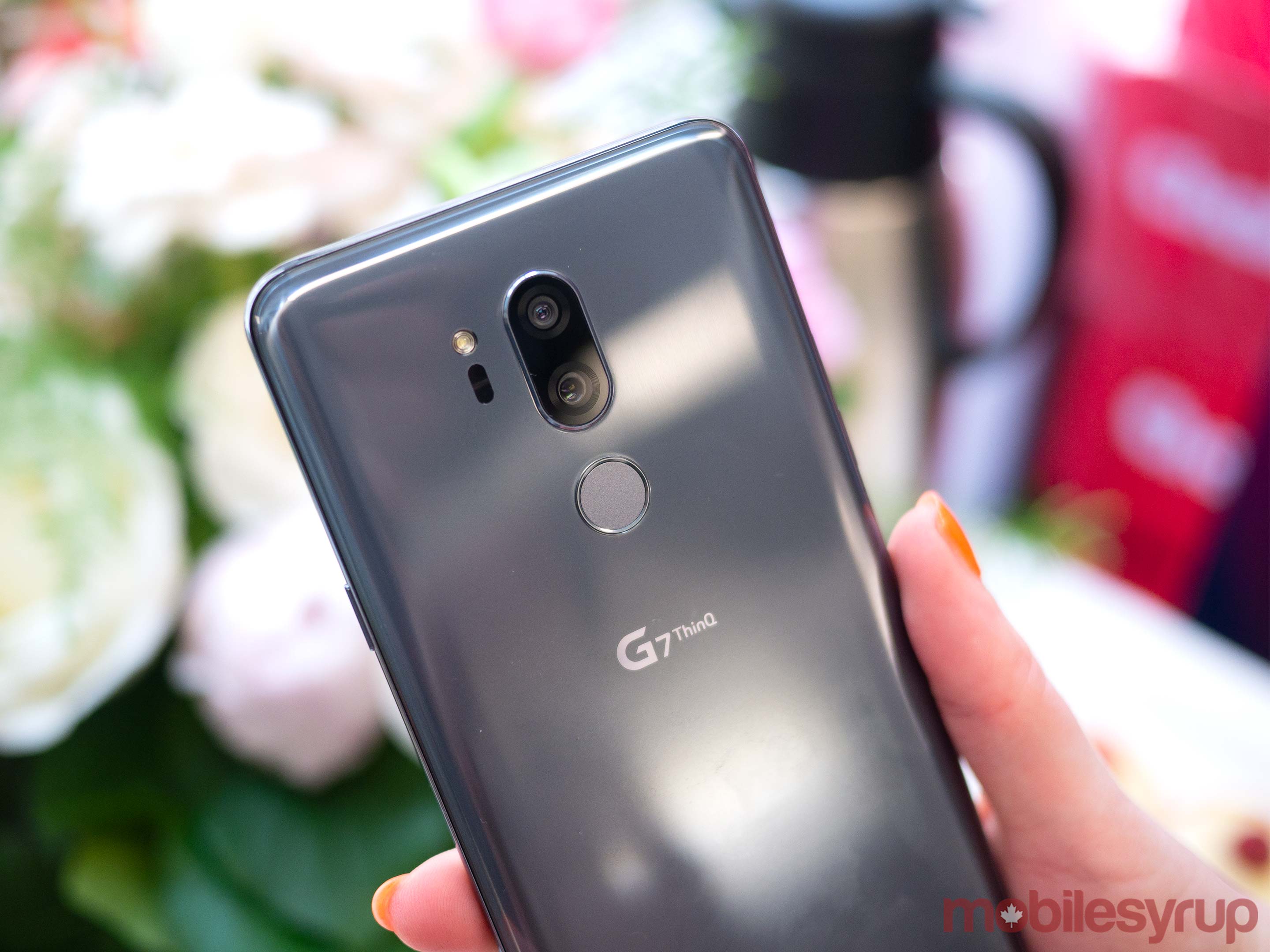
Still, LG puts its mark on the Assistant with custom commands specifically tailored to the G7 and its features. For instance, you can ask Assistant to take a wide-angle selfie.
Apart from the new AI button, though, the exterior of the device doesn’t introduce anything too groundbreaking for the G-series.
LCD over OLED
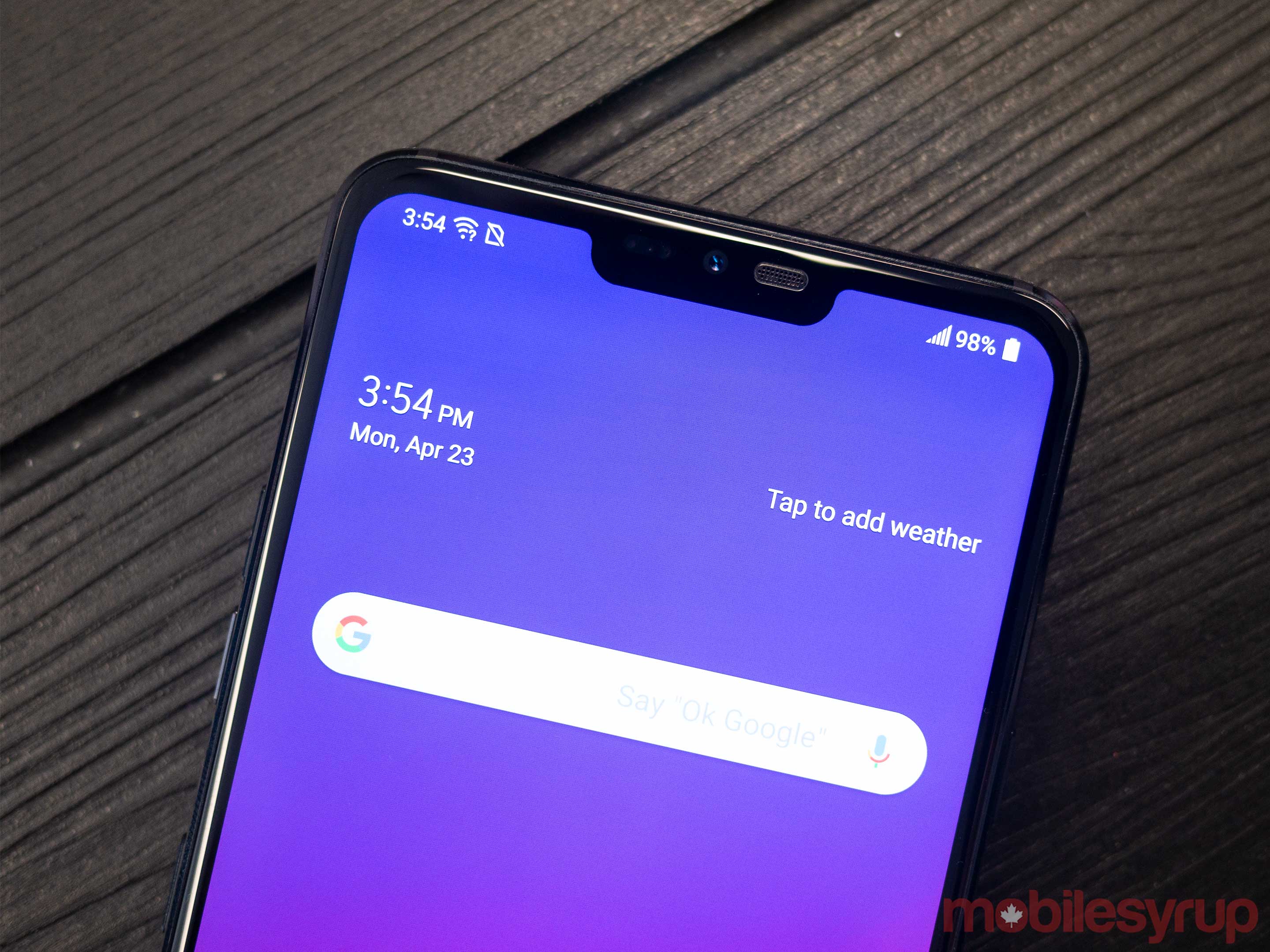
The most eye-catching element of the G7 is no doubt its screen, which is a notched 6.1-inch LCD panel with a 1440 x 3120 pixel resolution and 19.5:9 aspect ratio.
It’s a vast improvement over the G6’s 5.7-inch LCD display with a 1440 x 2880 pixel resolution and 18:9 aspect ratio. The size of the display brings it near plus-size competitors like Samsung’s Galaxy S9+, which has a 6.2-inch display, or the Huawei P20 Pro, which is also 6.1-inches.
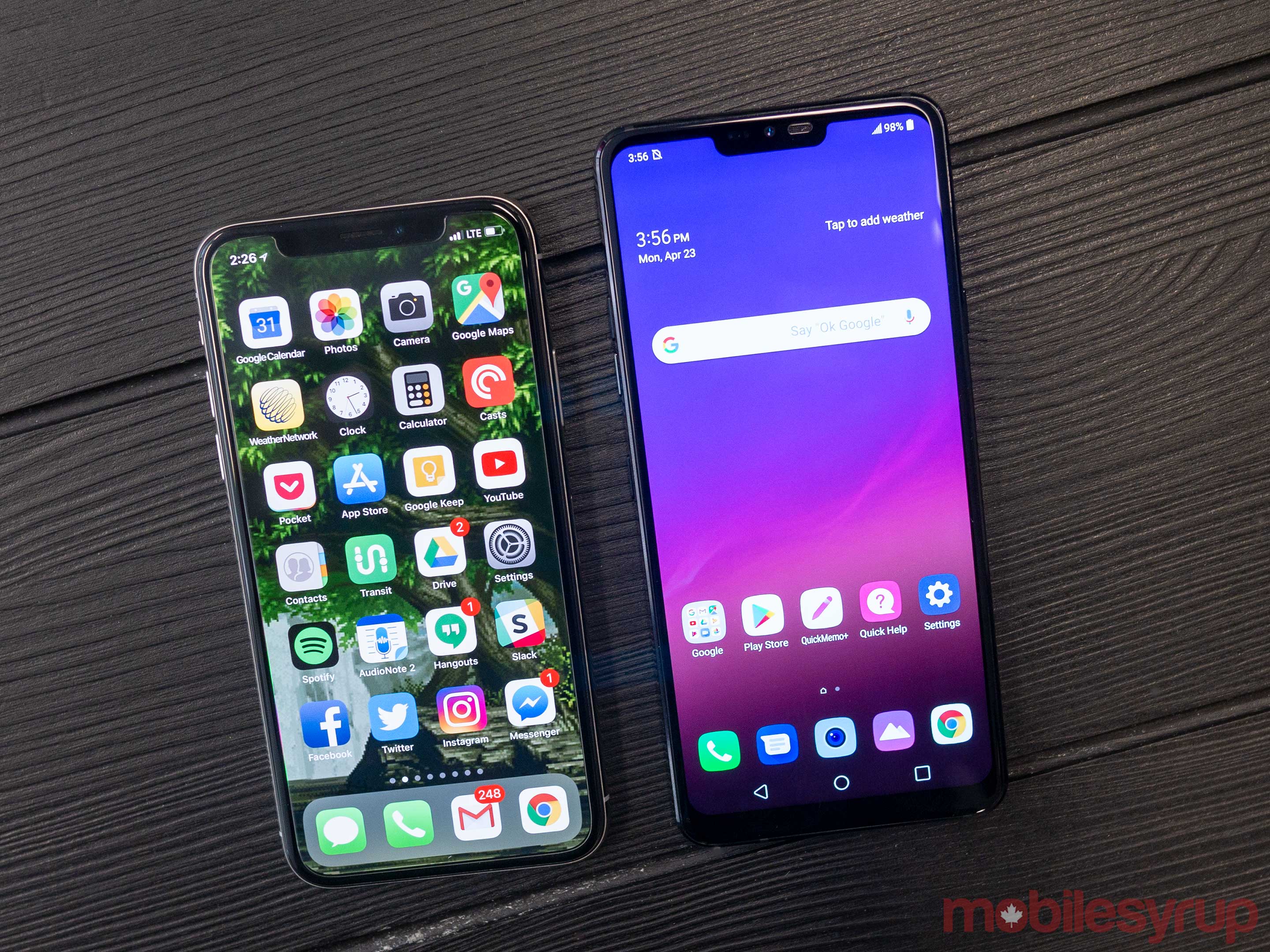
An OLED display could have been justifiably expected, given that LG made much of the OLED panel on the V30, the most recent entry to the V-series, which often serves as a test bed for features that later arrive on a G-series device. However, after the screen burn-in criticism directed at the LG-produced Pixel 2 XL, it makes sense LG opted to play it safe with LCD.
Of course, one couldn’t talk about the G7 without mentioning its notch. Though LG’s G7 is becoming just another device with an iPhone X-style screen cut-out, the company has added some software customizations that make it semi-unique.
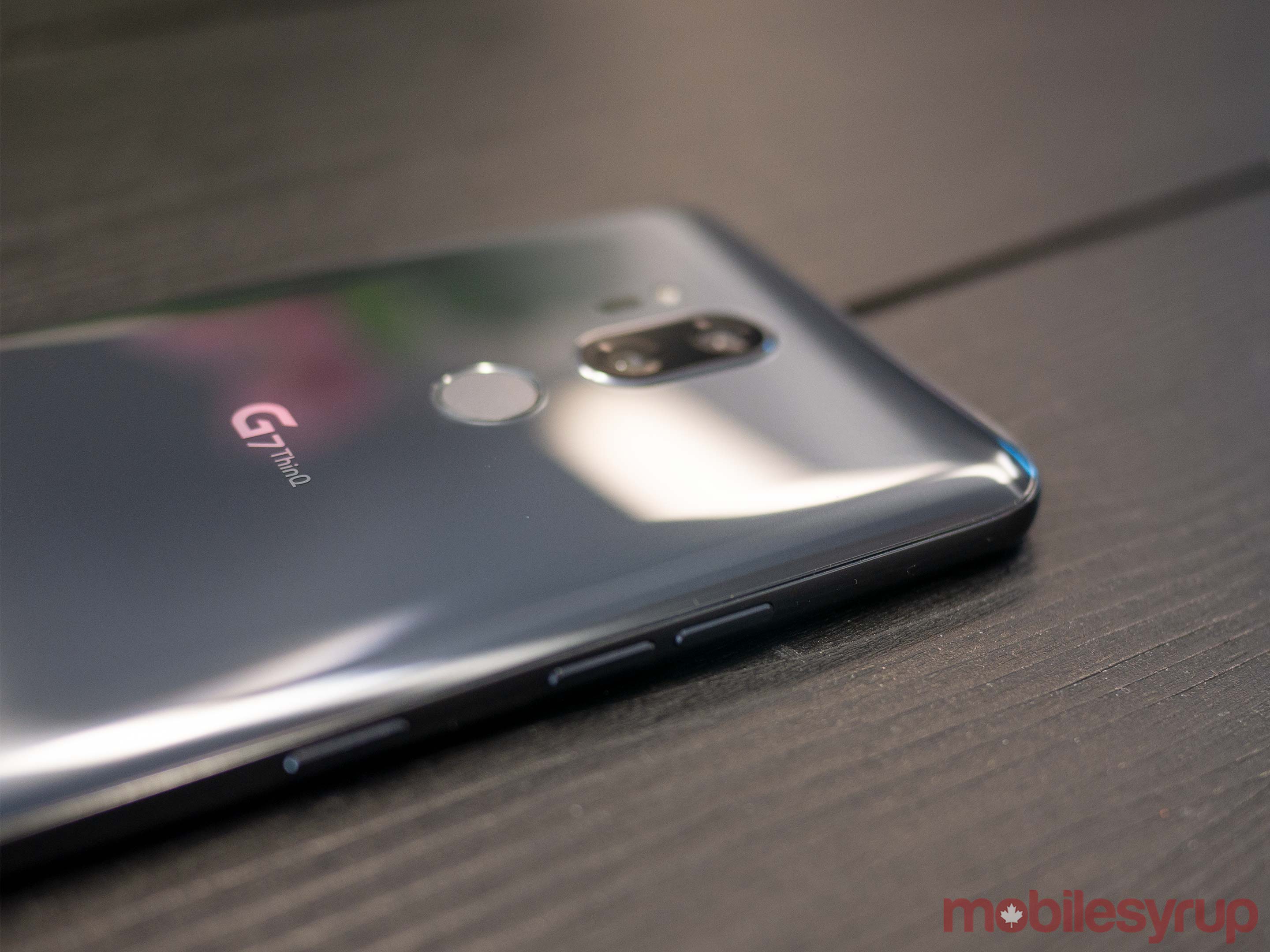
Not only can users ‘turn off’ the notch, making it into a black bar, they can also change it to feature different customizable colours. This also ties into LG’s second screen concept, an idea it’s been playing with for a while through the V-series.
Apart from the display improvements, the G7 takes an exceedingly staid approach to aesthetics. It features aluminum sides, a Gorilla Glass back (allowing for wireless charging), slim bezels and a round rear-facing fingerprint sensor. Additionally, it’s IP68-certified, like its predecessor.
Appearance-wise, the G7 does little stand out next to other flagships, lacking the flourishes that Samsung and Apple use to mark their products — think the S9’s curved edge display and the iPhone X’s notch design, which set off a cascade of copycats including the handset being previewed here.
Impressively loud
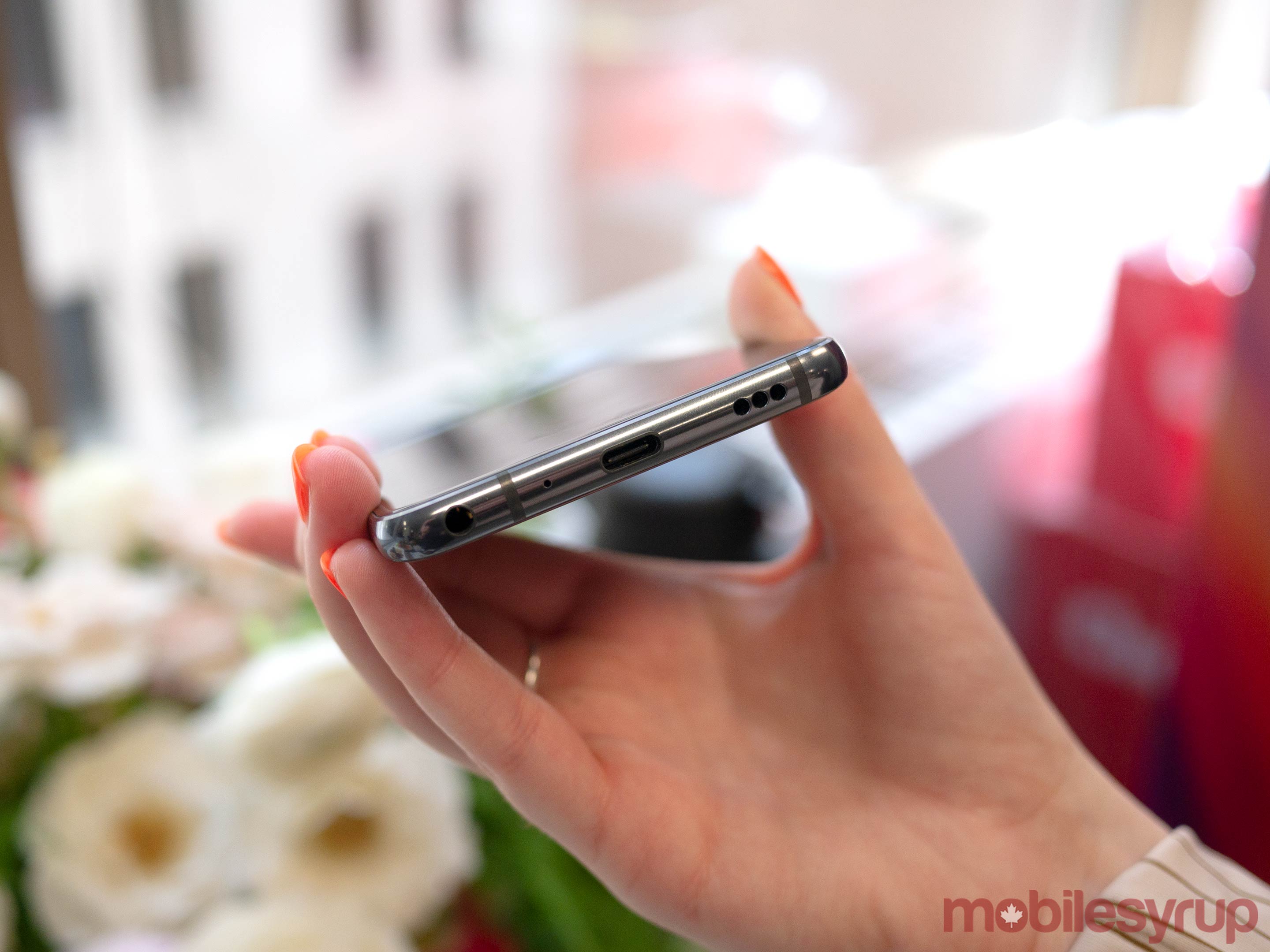
LG did make an innovative design choice internally with its ‘Boombox Speaker.’ The company says it came up with a new way to use the inner space of the smartphone as a resonance chamber, allowing it to amplify sound up to ten times over its competitors.
Though we weren’t offered a comparison, it was impressively loud, especially when set down on a flat surface for further amplification. The quality, however, was far from ideal. It sounded tinny and would no doubt grate on the nerves of audiophiles. Still, it would certainly serve its purpose in a makeshift party situation.
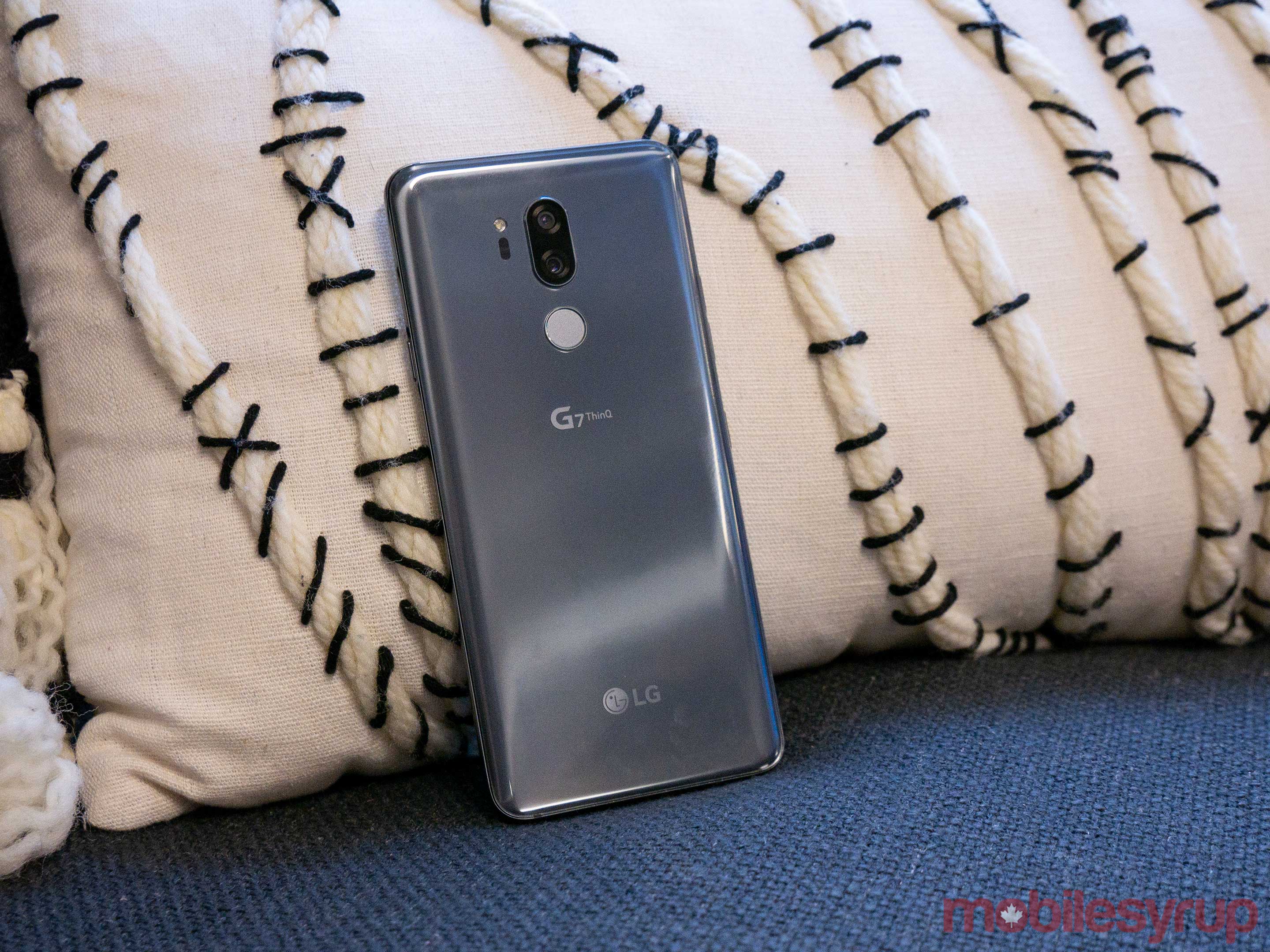
In addition to the Boombox Speaker, the G7 offers a Hi-Fi Quad DAC and DTS:X 3D Surround Sound, continuing LG’s strong focus on quality audio.
The company says it’s also proud that the device is compatible with Master Quality Authenticated (MQA) audio, a codec for high fidelity digital audio streaming and download.
But beyond design, audio or really anything else to do with the handset, LG put an emphasis on its camera during its hands-on presentation to press.
Camera focus

The South Korean company has amped up its camera credentials, with dual 16-megapixel rear shooters, one of which offers a f/1.6 aperture and 71-degree field-of-view, while the other features a f/1.9 aperture and 107-degree field of view.
This is a major improvement over the G6, which had dual 13-megapixel shooters, and also a step up on the V30, which had a 16-megapixel and 13-megapixel dual-shooter setup. The camera boasts reduced wide-angle distortion, real-time bokeh effect and improved low-light shooting — all of which proved accurate during our short trial time with the device.
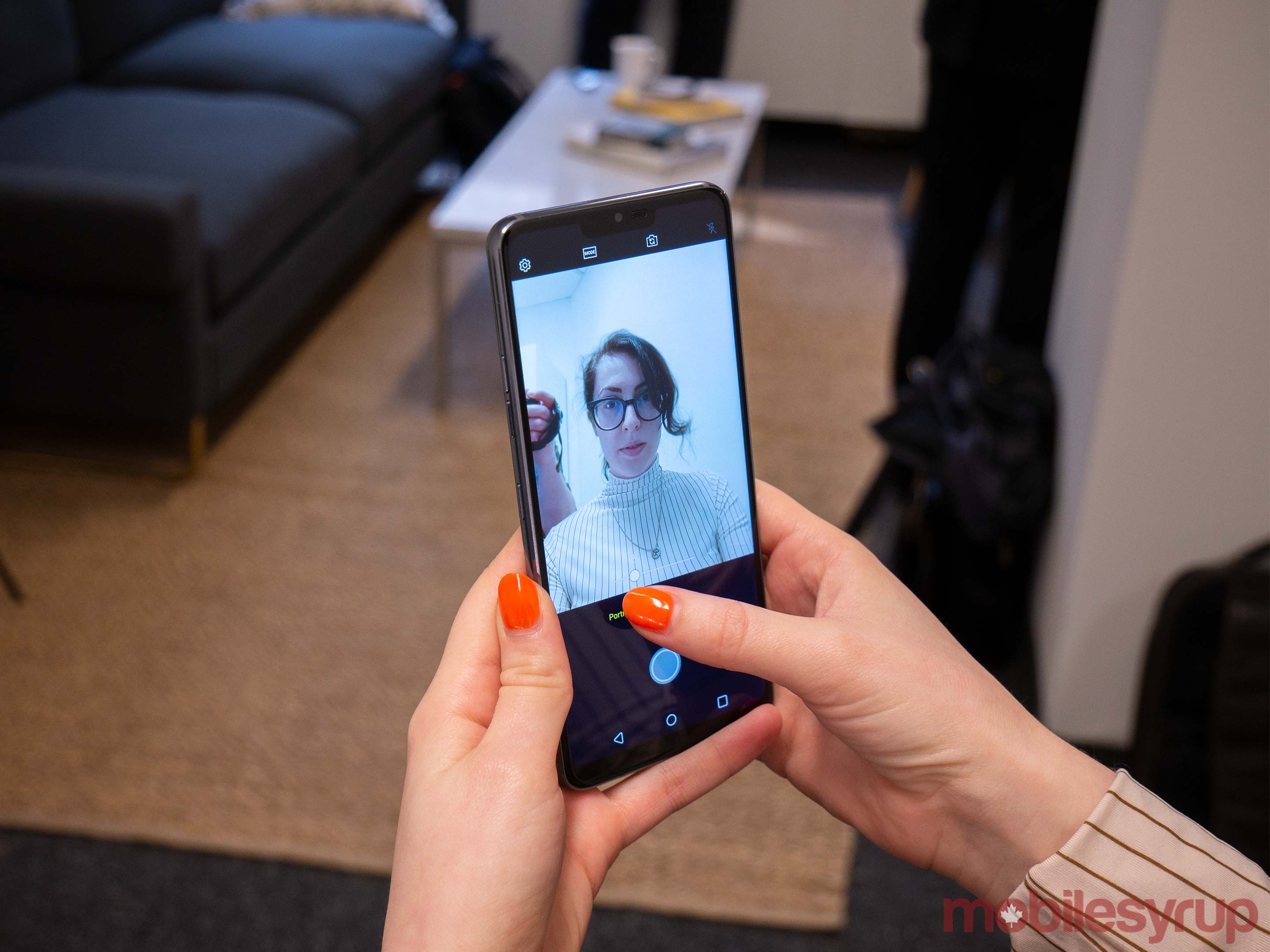
But the real crowning glory of the G7’s camera is its AI. Wave the camera around with AI mode on and you’ll see words pop up, guessing what’s in view. Once it clocks its environment, it automatically adjusts the camera settings to that scene, a handy option for photography amateurs.
The AI feature performed well, always landing on the right subject eventually. Additionally, LG says the AI is all on-device, which should assuage privacy fears.
I should note here that this type of on-board intelligence is certainly not unheard of, being that it’s a feature available on most modern DSLRs. Even an entry-level DSLR from Nikon, for instance, has an internal database of 30,000 images.
Meanwhile, the selfie camera offers an 8-megapixel shooter with an f/1.9 aperture, and took satisfactory shots from the few test pics I snapped.
LG’s classic non-stock Android
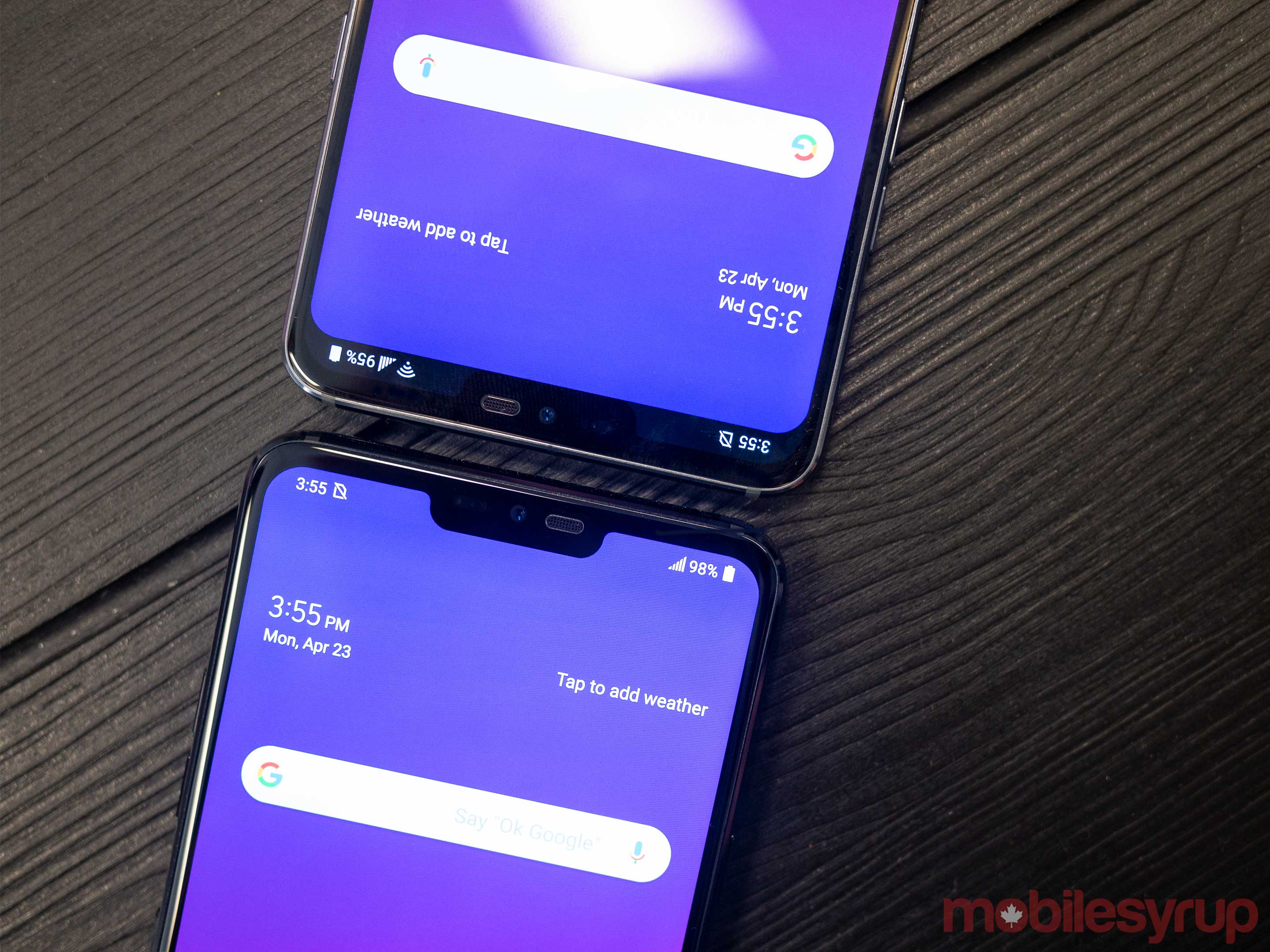
All this runs on an octa-core Snapdragon 845 chipset with 4GB RAM and 64GB of internal storage, backed by a 3,000mAh battery. Of course, we weren’t able to test any of these things extensively during our short time with the device, but the smartphone ran smoothly and didn’t crash during our time with several pre-production handsets.
As for the software, it was much the same as we’ve seen for the past several LG premium handsets. There’s still a disappointing lack of stock Android features integrated — which is perhaps not surprising but disappointing given LG and Google’s collaboration on Assistant — and a fair amount of LG’s own software competing for attention on the device.
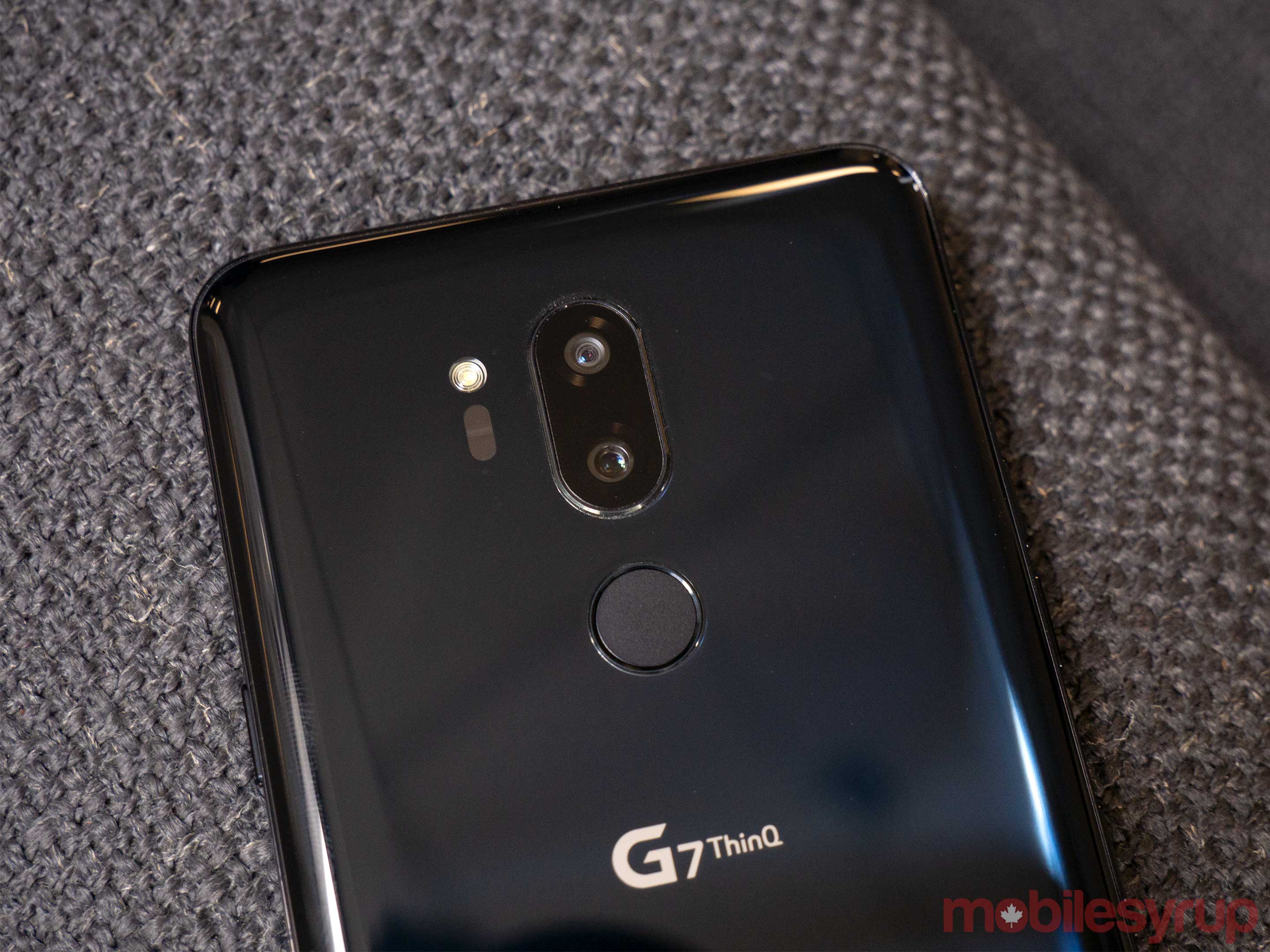
With a little customization, though, this could certainly be one of the most polished and consumer-friendly LG smartphones to ever hit the market.
It’s a device with one foot in the future through its strong AI focus, and one in the past, with its continued support for the headphone jack and lack of visual flair. That combination might be just what consumers desire at the moment, however. Whether or not the G7 will deliver a perfect fusion of futurism and practicality is yet to be seen — watch for our review in the coming weeks — but LG’s semi-rebranded G7 ThinQ is making a compelling argument for the idea so far.
Photography and videography by Patrick O’Rourke.
MobileSyrup may earn a commission from purchases made via our links, which helps fund the journalism we provide free on our website. These links do not influence our editorial content. Support us here.


